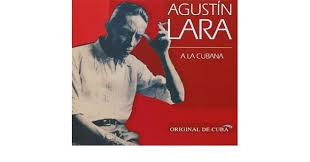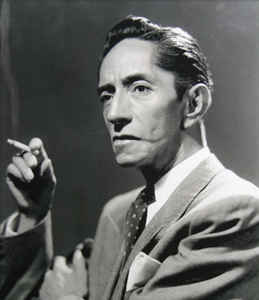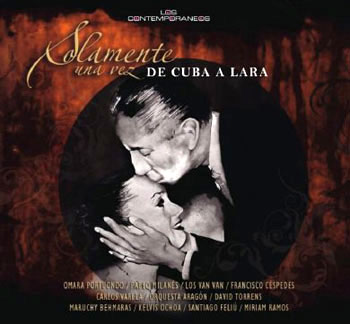 AGUSTIN LARA “EL FLACO DE ORO” Y SU PRESENCIA EN CUBA. INTERPRETES. VIDEOS.
AGUSTIN LARA “EL FLACO DE ORO” Y SU PRESENCIA EN CUBA. INTERPRETES. VIDEOS.
Agustín Lara Aguirre y Pino, el ‘Flaco de Oro’ como muchos lo conocen en el mundo artistico nació el 30 de Octubre de 1897 en Tlacotalpan, Veracruz, Mexico.
Agustín Lara supo imprimir al bolero cubano un sello personal. Intervino en unas 30 películas y creó alrededor de 700 melodías —canciones, pasodobles, pasacalles, baladas, tangos…— muchas de las cuales alcanzaron en español o dobladas a otros idiomas y cantadas incluso en estilos diferentes, una popularidad universal, y una presencia que mantienen incólume. Como expresa la ensayista Josefina Ortega: «No importa que transcurra el siglo XXI. La música de Lara sigue llegando a los corazones, como si tal cosa».
Corre el año 1932 y Agustín Lara emprende una carrera frenética hacia la fama. Hace en esa fecha su primera gira internacional. En
París arrebata a los franceses y una de sus composiciones, Farolito, se convierte allí en la melodía de moda.
Es por ese tiempo que hace su primer viaje a la capital cubana, en la compañía de Pedro Vargas y Ana María Fernández. Vuelve en mayo de 1939. Hace entonces una profesión de amor a Cuba. Declara entonces: «Regresaba de Francia… La Habana me abrió sus brazos… y no fui ingrato, ahí están ese Sueño guajiro y esas Coplas que nacieron en la inmensa pradera del Yumurí…».
Está aquí nuevamente en 1952. En La Bodeguita del Medio conoce a Sindo Garay y en el cabaré Montmartre toca el piano y conduce una orquesta de violines. Actúa en los Aires Libres del hotel Saratoga. Afirma el erudito Radamés Giro: «De su interés por la música cubana dan cuenta La Cumbancha —homenaje a la percusión cubana que grabó el Trío Matamoros, Antonio Machín y el cuarteto Caney—, Noche criolla y el danzonete Pobre de mí».
Cantan de Lara.
Es en la visita de 1939 cuando lo impacta una muchacha que se había revelado como Estrella naciente en La Corte Suprema del Arte, del Circuito CMQ, y que en esos momentos hacía un poco de todo en la propia emisora: hace la locución, canta y recita en la emisora de Monte y Cárdenas. Se llama Xiomara Fernández; tiene 21 años de edad y es tan bella como tímida. Gaspar Pumarejo, que sería el pionero de la TV en Cuba, los presenta. No han cambiado más que unas pocas palabras cuando Lara expresa su deseo de escribir una canción para que ella la estrene. Xiomara no sabe qué responder, queda sin palabras. Se siente pequeñita ante un compositor de la talla del que tiene delante, pero al fin, con muchas dudas, accede.
Lara escribe para ella ‘Cuando me miraste tú’, que Xiomara estrena en el Gran Teatro de La Habana, que lleva hoy el nombre de Alicia Alonso, acompañada al piano por el propio compositor. La cantaría luego en teatros de Matanzas y Pinar del Río. Y Dice:
«Toda la gloria fue mía /cuando me miraste tú / toda la gloria fue mía /cuando me miraste tú / se quedó sin luz el día / todo se quedó sin luz /y empezó la vida mía / cuando me miraste tú…» Xiomara Fernández recordaría muchos años después que siempre se sintió fascinada por Agustín; era muy fino y delicado, decía. Le enviaba todos los días un ramo de flores a la CMQ. Ella temió que tanta gentileza llamara la atención y despertara sospechas entre sus compañeros y se lo hizo saber. Él entonces comenzó a enviarle a diario una sola flor con una tarjeta en la que se leía: «Pensando en ti».
Cantan de Lara.
Se encontraron varias veces en uno de los bares del hotel Sevilla. Lara le habló de llevarla a México en planes de trabajo, y precisó que podía ir en compañía de algún familiar. A Xiomara el viaje no le interesaba. Lara se tiró a fondo entonces y le propuso matrimonio. Ella dijo no.
Prosiguió Xiomara una carrera ascendente y no demoró en iniciar un noviazgo con José Antonio Alonso, el disputado conductor de La Corte Suprema, el hombre de las mil novias, como le llamaba la prensa de la época.
Cantan de Lara.
La música de Agustín Lara se mantiene en el repertorio de cantantes cubanos de todas las épocas, dentro y fuera de la Isla.
El disco Solamente una vez de Cuba a Lara recoge las interpretaciones de grandes voces que lo cantan a la cubana. Pablo Milanés interpreta ‘Noche de ronda’, y Omara Portuondo, ‘Solamente una vez’, mientras que la Orquesta Aragón acomete ‘Lamento jorocho’, y Francisco Céspedes vocaliza ‘Regalo de viaje’, por petición expresa de una de las exesposas del compositor. Están también en la placa Van Van, Miriam Ramos, Kelvis Ochoa, Carlos Varela, Santiago Feliú y David Torrens, entre otros.
«Lara ha sido parte de sus vidas, algunos crecieron con él y todos lo han adoptado como si fuera cubano», afirmó el productor mexicano de este disco.
En su momento fueron muy celebradas las interpretaciones, que, por separado, hicieron de ‘Arráncame la vida’, Orlando Contreras y Abelardo Barroso, que cantaba mejor a medida que envejecía. Memorables son las de ‘Pecado’, de Blanca Rosa Gil, y la que hizo Barbarito Diez de ‘Palmeras’. Mucho gustan ‘El organillero’, por la Aragón, ‘Rival’, por la orquesta América y ‘Amor de mis amores’, por Elena Burke. Se mantiene viva en el recuerdo la interpretación que Roberto Sánchez y la orquesta Gloria Matancera hicieron de ‘Santa’, la melodía que Lara prefería entre todas las que compuso.
Una estatua de bronce, obra del escultor yucateco Humberto Peraza, que evoca la presencia del compositor entre nosotros. Resalta la imagen la extrema delgadez del artista que viste de corbata y chaqueta. Su mano izquierda descansa en el brazo derecho mientras la diestra se alza a la altura de la cara para insinuar la presencia del cigarrillo que se llevará a la boca. Y es que el autor de la opereta El pájaro de oro y de tanta música para el cine, fumador incesante en vida, fuma ahora en la eternidad.
 AGUSTIN LARA, “THE GOLDEN FLACO” HIS PRESENCE IN CUBA. INTERPRETERS. VIDEOS.
AGUSTIN LARA, “THE GOLDEN FLACO” HIS PRESENCE IN CUBA. INTERPRETERS. VIDEOS.
Agustín Lara Aguirre y Pino, ‘El Flaco de Oro’ as many know him in the artistic world was born on October 30, 1897, in Tlacotalpan, Veracruz, Mexico.
Agustín Lara was able to print a personal stamp to the bolero. He took part in about 30 films and created around 700 melodies – songs, pasodobles, parades, ballads, tangos … – many of which reached in Spanish or dubbed into other languages and sung even in different styles, universal popularity, and a presence that They keep intact. As the essayist, Josefina Ortega says: «It doesn’t matter if the 21st century passes. Lara’s music continues to reach hearts as if such a thing ».
The year is 1932 and Agustín Lara undertakes a frantic race towards fame. He made his first international tour on that date. In
Paris snatches the French and one of his compositions, Farolito, becomes the fashionable melody there.
It is at that time that he made his first trip to the Cuban capital, in the company of Pedro Vargas and Ana María Fernández. He returns in May 1939. He then makes a profession of love for Cuba. He then declares: “I was returning from France … Havana opened its arms to me … and I was not ungrateful, there are that Guajiro Dream and those Coplas that were born in the immense meadow of Yumurí …”.
He is here again in 1952. In La Bodeguita del Medio he meets Sindo Garay and in the cabaret, Montmartre plays the piano and conducts a violin orchestra. It acts in the Free Aires of the Saratoga hotel. The scholar Radamés Giro affirms: «Of his interest in Cuban music, La Cumbancha – tribute to the Cuban percussion recorded by the Matamoros Trio, Antonio Machín and the Caney Quartet—, Creole Night and the Poor Danzonete of Me».
It is in the visit of 1939 when a girl who had revealed herself as a Rising Star in the Supreme Court of Art, of the CMQ Circuit, and who at that time did a bit of everything on the station itself: does the speech, sings and recite on the station of Monte y Cárdenas. His name is Xiomara Fernández; She is 21 years old and as beautiful as she is shy. Gaspar Pumarejo, who would be the pioneer of TV in Cuba, presents them. They have not changed more than a few words when Lara expresses her desire to write a song for her to release. Xiomara does not know what to answer, he is speechless. She feels tiny before a composer the size of the one in front of her, but finally, with many doubts, she agrees.
Lara writes for her ‘When you looked at me’, that Xiomara premieres at the Great Theater in Havana, which today bears the name of Alicia Alonso, accompanied on piano by the composer himself. He would later sing it in theaters of Matanzas and Pinar del Río. And says:
«All the glory was mine / when you looked at me / all the glory was mine / when you looked at me / ran out of light the day/everything ran out of light / and began my life / when you looked at me …» Xiomara Fernández I would remember many years later that she was always fascinated by Augustine; It was very fine and delicate, he said. I sent a bouquet of flowers to the CMQ every day. She feared that such kindness would attract attention and arouse suspicion among her classmates and let her know. He then began to send him a single flower every day with a card that read: “Thinking of you.”
They met several times in one of the bars of the Sevilla hotel. Lara told her about taking her to Mexico on work plans and said she could go in the company of a relative. Xiomara was not interested in the trip. Lara threw herself thoroughly and proposed marriage. She said no.
Xiomara continued an upward career and did not delay in beginning a courtship with José Antonio Alonso, the disputed driver of the Supreme Court, the man of a thousand brides, as he was called by the press of the time.
The music of Agustín Lara is maintained in the repertoire of Cuban singers of all ages, inside and outside the Island.
The album Only Once from Cuba to Lara collects the interpretations of great voices that sing it to the Cuban. Pablo Milanés performs ‘Noche de Ronda’, and Omara Portuondo, ‘Only Once’, while the Aragón Orchestra performs ‘Lamento Jorocho’, and Francisco Céspedes vocalizes ‘Gift of Travel’, at the express request of one of the composer’s ex-wives. They are also on the Van Van, Miriam Ramos, Kelvis Ochoa, Carlos Varela, Santiago Feliú and David Torrens, among others.
“Lara has been part of their lives, some grew up with him and all have adopted him as if he were Cuban,” said the Mexican producer of this record.
Lara’s Songs.
At the time the interpretations were very celebrated, which, separately, made ‘Arráncame la vida’, Orlando Contreras and Abelardo Barroso, who sang better as he got older. Memorable are those of ‘Sin’, by Blanca Rosa Gil, and the one made by Barbarito Diez de ‘Palmeras’. They really like ‘El organillero’, for Aragón, ‘Rival’, for the orchestra América and ‘Amor de mis amores’, for Elena Burke. The interpretation that Roberto Sánchez and the orchestra Gloria Matancera made of ‘Santa’, the melody that Lara preferred among all those he composed, is kept alive in the memory.
A bronze statue, the work of the Yucatecan sculptor Humberto Peraza, which evokes the presence of the composer among us. The image is highlighted by the extreme thinness of the artist who wears a tie and jacket. His left-hand rests on the right arm while the right hand is raised at the height of the face to insinuate the presence of the cigarette that will be brought to the mouth. And is that the author of the operetta The golden bird and so much music for the cinema, a ceaseless smoker in life, now smokes in eternity.
Agencies/ Wiki/ Lecturas/ Ciro Bianchi/ Extractos/ Excerpts/ Internet Photos/ YouTube/ Arnoldo Varona/ www.TheCubanHistory.com
THE CUBAN HISTORY, HOLLYWOOD.








